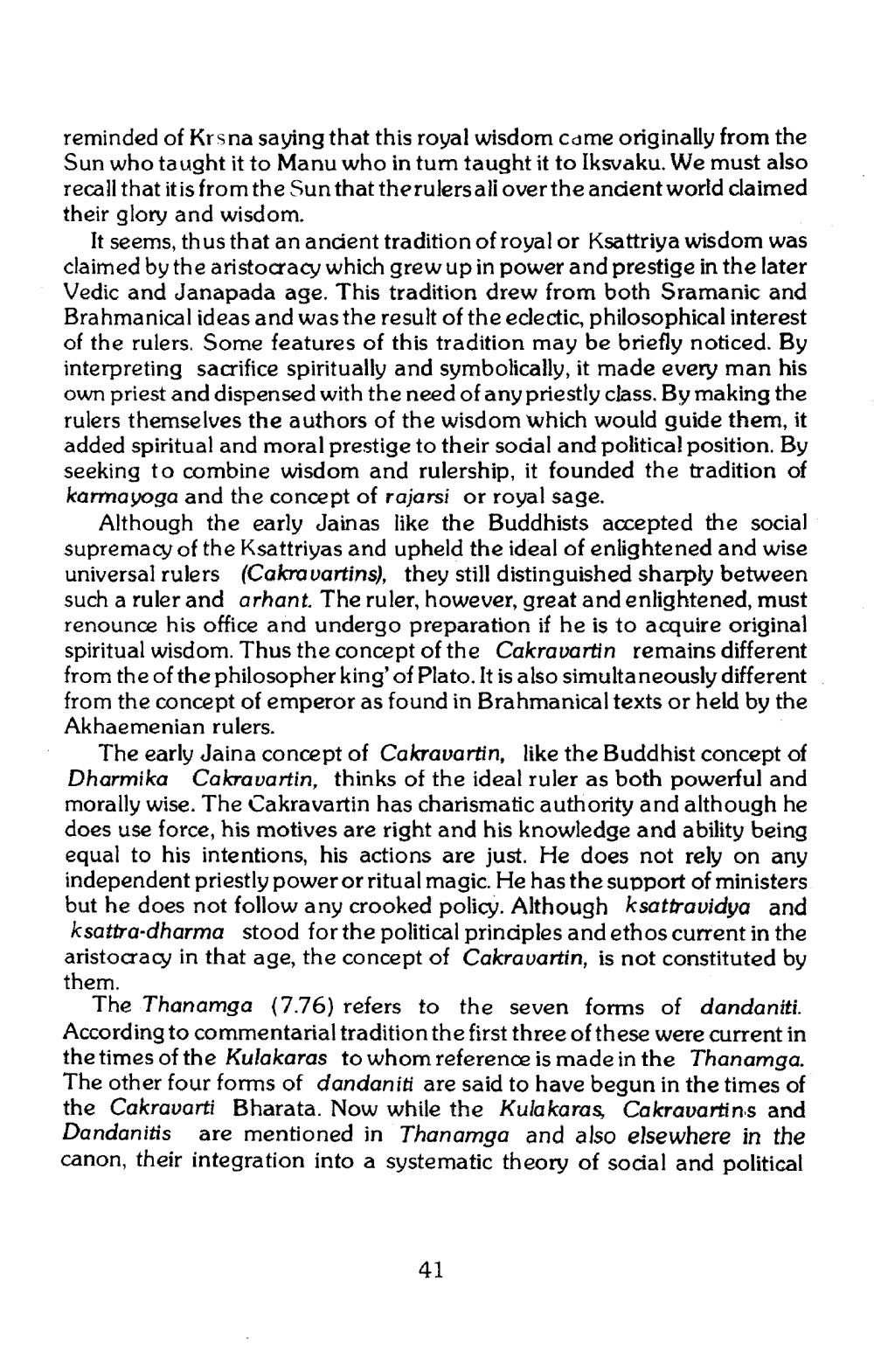________________
reminded of Krsna saying that this royal wisdom came originally from the Sun who taught it to Manu who in tum taught it to Iksvaku. We must also recall that it is from the Sun that therulers ali over the ancient world claimed their glory and wisdom.
It seems, thus that an ancient tradition of royal or Ksattriya wisdom was claimed by the aristocracy which grew up in power and prestige in the later Vedic and Janapada age. This tradition drew from both Sramanic and Brahmanical ideas and was the result of the eclectic, philosophical interest of the rulers. Some features of this tradition may be briefly noticed. By interpreting sacrifice spiritually and symbolically, it made every man his own priest and dispensed with the need of any priestly class. By making the rulers themselves the authors of the wisdom which would guide them, it added spiritual and moral prestige to their social and political position. By seeking to combine wisdom and rulership, it founded the tradition of karmayoga and the concept of rajarsi or royal sage.
Although the early Jainas like the Buddhists accepted the social supremacy of the Ksattriyas and upheld the ideal of enlightened and wise universal rulers (Cakravartins), they still distinguished sharply between such a ruler and arhant. The ruler, however, great and enlightened, must renounce his office and undergo preparation if he is to acquire original piritual wisdom. Thus the concept of the Cakravartin remains different from the of the philosopher king' of Plato. It is also simultaneously different from the concept of emperor as found in Brahmanical texts or held by the Akhaemenian rulers.
The early Jaina concept of Cakravartin, like the Buddhist concept of Dharmika Cakravartin, thinks of the ideal ruler as both powerful and morally wise. The Cakravartin has charismatic authority and although he does use force, his motives are right and his knowledge and ability being equal to his intentions, his actions are just. He does not rely on any independent priestly power or ritual magic. He has the support of ministers but he does not follow any crooked policy. Although ksattravidya and ksattra-dharma stood for the political principles and ethos current in the aristocracy in that age, the concept of Cakravartin, is not constituted by them.
The Thanamga (7.76) refers to the seven forms of dandaniti. According to commentarial tradition the first three of these were current in the times of the Kulakaras to whom reference is made in the Thanamga. The other four forms of dandaniti are said to have begun in the times of the Cakravarti Bharata. Now while the Kulakaras, Cakravartins and Dandanitis are mentioned in Thanamga and also elsewhere in the canon, their integration into a systematic theory of social and political




